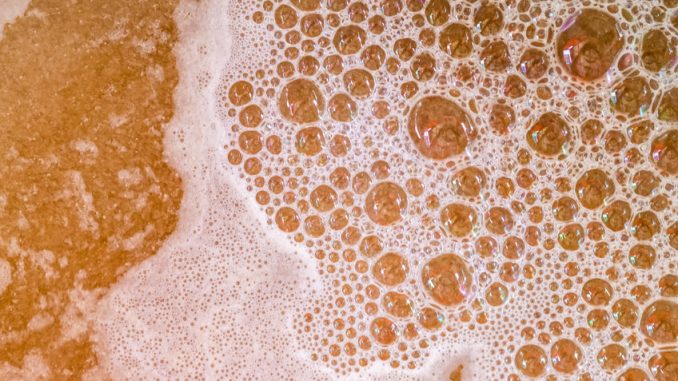
Hot trub and cold trub are two important terms that brewers in particular need to understand more about.
Hot Trub/Hot Break
Wort is boiled for generating a fermentation medium to which yeast can be added for the fermentation process. During boiling, tannins are extracted from the malt and added hops encourage and promote protein precipitation and coagulation. This coagulated protein comes from the malt.
The hot trub is coagulated protein, hop particles and other material and simple nitrogen compounds that also interact with various carbohydrates and polyphenols. They all form a particular slurry precipitate.
Hot trub is separated from wort using the whirlpool system,
Wort loss is high especially on scale-up in large breweries. The most common method is to create a whirlpool which relies on the ‘teacup’ effect of seeing large particulate material move to the centre of the whirlpool.
When the trub cone created by the whirlpool system collapses, when the wort is drained, further residual turbidity in the clarified wort occurs.
The whirlpool system has been challenged using centrifugation but has not been as widely taken up as expected because of high capital cost and high energy consumption.
Hot trub particulates vary widely depending on the raw materials, the brewing process employed. The size range is between 0.5 and 500 microns.
Cross-flow membrane filtration looks a suitable approach to recovery of high-quality wort from hot trub. The commercial membrane systems do suffer from issues such as differing particle sizes, probable fouling along with the high wort temperatures.
Cold Trub/Cold Break
Cold trub or cold break is the precipitate that forms when wort is cooled before fermentation. The cooling process encourage proteins to precipitate and form insoluble complexes with proteins, protein-polyphenol complexes and carbohydrates.
Cold trub needs to also be removed. Its creation depends on the yeasts used, their number, strain, how they are removed and degree of removal. Removing some cold trub improves yeast viability and finished beer quality, reducing haze components.
A settling tank, flotation and centrifugation are the best ways to remove cold trub. It remains to be seen how successful cross-flow filtration might be.
Leave a Reply